Last updated on November 19th, 2023
Featured image: Iceland’s West Coast Gate | Photo by Karen Gershowitz
Tips to manage chronic pain and make your dreams happen
By Karen Gershowitz, Contributing Writer
Traveling used to be easy. I never had to consider the difficulty of mundane actions. But after experiencing severe back pain caused by bulging disks, arthritis and pinched nerves, I began to think carefully about travel. When you are travelling with chronic pain, every twist and turn has the potential for lasting pain. That pain is often a reminder of aging. It makes me even more determined to continue traveling, not knowing when I might be permanently grounded.
Perhaps I can no longer be the fearless traveler I’d once been, but I can find ways to manage chronic pain and continue to be adventurous.
A painful start in Iceland
The announcement to prepare for landing woke me from a fitful sleep—in a few minutes we’d be touching down in Reykjavik. I was heading to Iceland in part because it is a relatively short flight from New York.
After being on the plane for four and a half hours, my lower back screamed complaints—a constant dull ache punctuated by sharp stabs. I stretched my neck, then arms and legs, within the confines of the narrow coach seat. I hoped the orthopedic cushion, heating pad, and painkillers I’d packed would make the trip bearable.
Closing my eyes, I prayed my back would cooperate for the next 10 days. I was not ready for my world to shrink.
Outside the terminal, I met up with the small group I’d be traveling with. A few dozen miles out of Reykjavik, our minibus was just about the only vehicle on the narrow road. Within a couple of hours, our group was in remote terrain—it doesn’t take many miles in Iceland to escape populated areas.
We chanced upon tiny Icelandic horses jauntily prancing and running around a rough dirt track in the middle of nowhere. Clouds of geothermal steam poured from fissures in the earth, creating an almost impenetrable curtain blocking out snow-capped mountains. Then at the lodge, exhausted from travel, we ate a quick dinner and went to bed.

Karen on a puffin cruise //Photo by Karen Gershowitz

Breathing in the majesty of Iceland on the first morning
In the morning, we headed to the western coastline. At the shoreline lurked craggy outcroppings of stone, sculpted by time and tides into fantastical shapes.
Our guide Uli led us past a minuscule harbor where a half dozen weather-beaten fishing boats were docked, to a narrow, well-worn path that skirted the edge of nearly vertical cliffs. I walked extra carefully, concerned about tripping and jarring my spine.
Uli led us onto a narrow finger of land jutting into the sea. We huddled near the center, peering down into a pit descending to the ocean. Sea birds nested in crevices, their beady black eyes shining and alert for signs of danger. Stiff currents created a whooshing roar as water entered the pit and receded. Icy droplets made us flinch. I took a slew of photos, knowing I’d go home with too many pictures, none of them conveying the majesty in front of me.
I peeled off from the group, wanting to escape their chatter and leisurely amble down the path. I breathed in the frigid northern air and fixed the images in my memory. The surrounding snow-capped volcanoes glistened. Windows on a tiny building twinkled in the far distance, the only tangible evidence of humans.
I took a step, then froze. A knife had entered my spine. I willed myself not to scream. I couldn’t move, didn’t know what had happened. The blinding pain blocked out every trace of beauty.
No one was nearby. Looking down, I saw a small scuff mark in the dirt—I’d tripped on a pebble and slid about three inches. That slight misstep had caused this searing pain. I willed myself to hobble forward. Near our van, I found a bench, lay down and pulled one knee to my chest, stretching. Then I switched legs and repeated. By then, the group had caught up with me.
“Are you okay? What happened? You’re white as a ghost!”
I explained I had tripped.
“I’ve got painkillers, Tramadol, Vicodin, Percocet, if you want them.”
More concern and advice followed. While comforting, none of it helped to diminish the pain. How could this have happened on the second day?
Hours later, two Aleve, more stretching and a heating pad had dulled the pain. The knife had been extracted and was replaced by the constant dull achiness that follows a too-strenuous workout. I didn’t go with the group to dinner because sitting in a chair, any chair, magnified the agony.
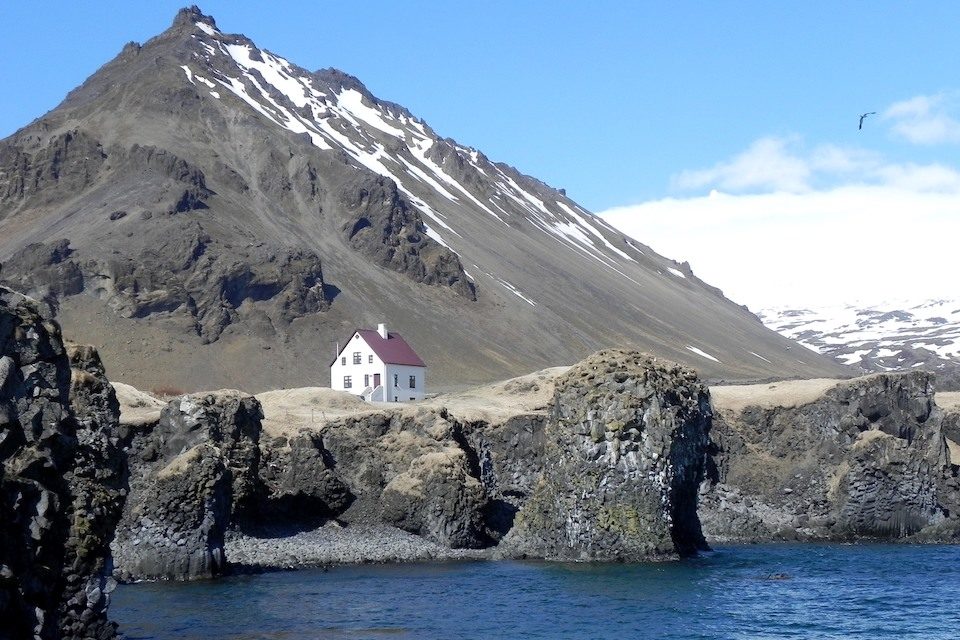
Iceland’s geothermal springs bring relief
My hotel was ringed by hot tubs, fed from one of Iceland’s many geothermal springs. I shivered my way into the chilly night, though at 9 pm the sun was still bright. At the tub, I gratefully sank into swirling hot water. Steam rose from my body and the surface of the water creating a mini fog; through the droplets I caught glimpses of shimmering, snowy mountains.
An hour later, my skin was red, I was light-headed and woozy, but felt better. Before ducking inside to escape the cold, I paused to take one more appreciative glance. At 10 pm, it was still bright, not a single star visible, the sun not even hovering close to the horizon.
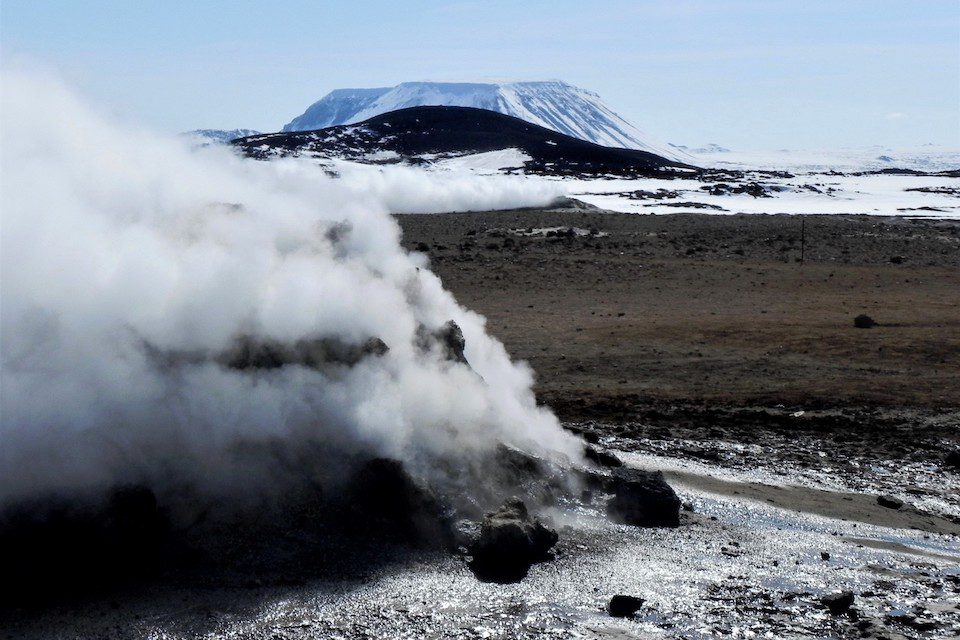
Unexpected inspiration from another solo woman
The next day, when the group hiked up a steep trail to see an unusual geological formation, I stayed behind. Pat, a woman many years younger than I, also chose to forego the walk. I’d noticed she walked with ski poles and asked about them.
“I’m always afraid of falling, they help to give me confidence.” Pat explained she’d been diagnosed with MS about 10 years earlier.
“Why come on such a strenuous trip?” I asked.
“I don’t do well in heat; my symptoms are less severe in the cold.” Chuckling, she continued. “We’ve been to Antarctica, Alaska, the Canadian Rockies and every other cold weather tourist destination we could think of. Iceland was just next on the list.”
Pat, like me, had traveled since she was young and refused to give it up. Even travelling with chronic pain, she had learned to do what she could, skip activities beyond her capabilities, but to keep moving no matter what and appreciate whatever was possible.
I listened to her story of diminishing capabilities with awe and fear. Awe at her bravery in joining such a rigorous trip and fear that my condition would worsen over time, making everything even more difficult. Pat’s refusal to accept that she should stay at home, out of harm’s way, made her a hero and role model to me.
As the trip progressed, pain became my constant companion. It sometimes limited what I was able or willing to do. Even when feeling okay, the fear of pain hung over me specter-like, reminding me that a minor mishap could curtail my activities even further.
Despite my limitations, I feasted on the Icelandic landscape of plunging waterfalls, snow-capped volcanoes, quaint homes, geysers, fields of mud bubbling from geothermal activity and clear skies that never seemed to go dark. I learned to graciously take a steadying hand when offered.
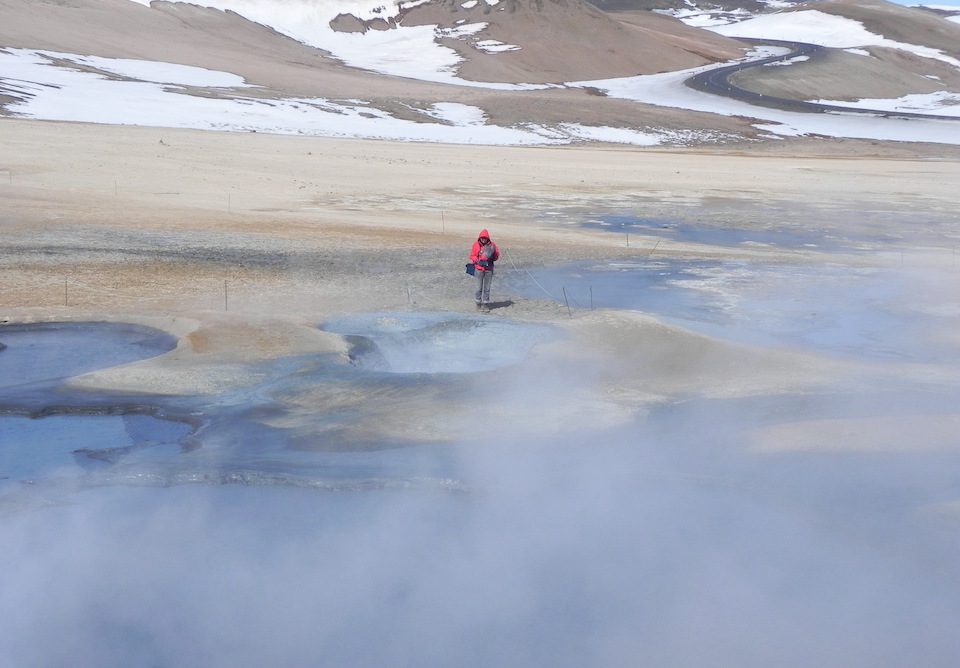
Learning to travel with chronic pain
For the remainder of the trip. I managed to avoid further accidents, though I spent a lot of energy on mindful walking.
Yes, life had changed. I could no longer be the fearless traveler I’d once been, but I could also continue to travel with chronic pain. Pat had demonstrated that despite the difficulties, it is possible to be adventurous.
Since then, I’ve made many solo trips all around the globe. I am careful and willing to put up with discomfort. I take whatever help is offered. I enjoy the food, scenery and people. I’ve slowed down and go at a pace that is comfortable for me. I don’t feel compelled to see everything.
When I need a break, I sit at a café and people watch. Doing that I’ve met people and engaged in conversations that wouldn’t have happened if I’d been speeding around seeing everything.
With careful planning and mindful traveling, the world remains open to me.
My Tips for Travelling with Chronic Pain
- Get information before you go: If you’re thinking of traveling with an organized tour ask a lot of questions before signing up. I have difficulty traveling in any vehicle for more than a couple of hours, so I ask how often between rest stops? How many hours will the longest drive be? I also ask if there will be alternate activities if I can’t do something the group will be doing.
- Plan ahead: Research places and activities that you will be able to comfortably do. Don’t expect to keep up a crazy pace, a few experiences you truly enjoy will make for a great trip.
- Pack extra medication: You never know if you’ll get stuck somewhere unexpectedly. Always make sure to purchase medivac insurance if you’re going anywhere exotic.
- Bring whatever aids or supports will make you more comfortable: I bring a lumbar pillow for my back, extra pain medication, and a back brace as a last resort.
- Stick to exercise regimens: I pack exercise bands and religiously stretch and work out every morning.
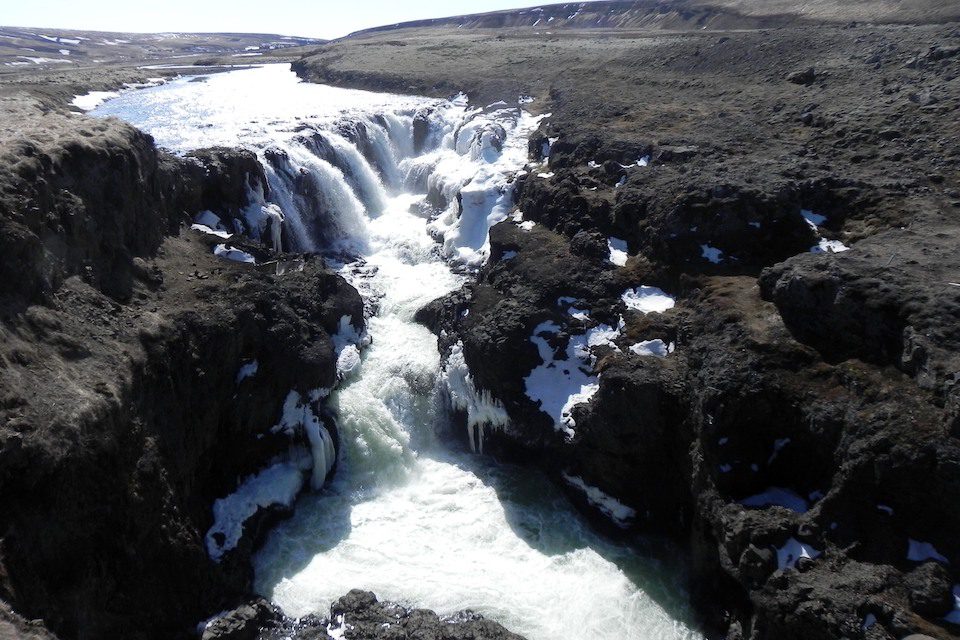
Read More on Accessible Travel
Making International Headlines: Can Three Women Travel Solo in Wheelchairs to Egypt?
When three women travel to Egypt in a wheelchair, it’s not just about breaking stereotypes about disabilities but also a test of our friendship and support for each other.
Creating an Inclusive Travel World Where Everyone Belongs: Seven Things That Need to Change
With the growing demand for accessibility in the travel space, here are seven ways the travel industry can embrace a higher level of inclusion.
Accessible Adventures in Albania: An Off-Season Road Trip is Full of Surprises
A off-season road trip through the southern part of Albania showcases stunning coastal villages, ancient ruins, and picturesque landscapes

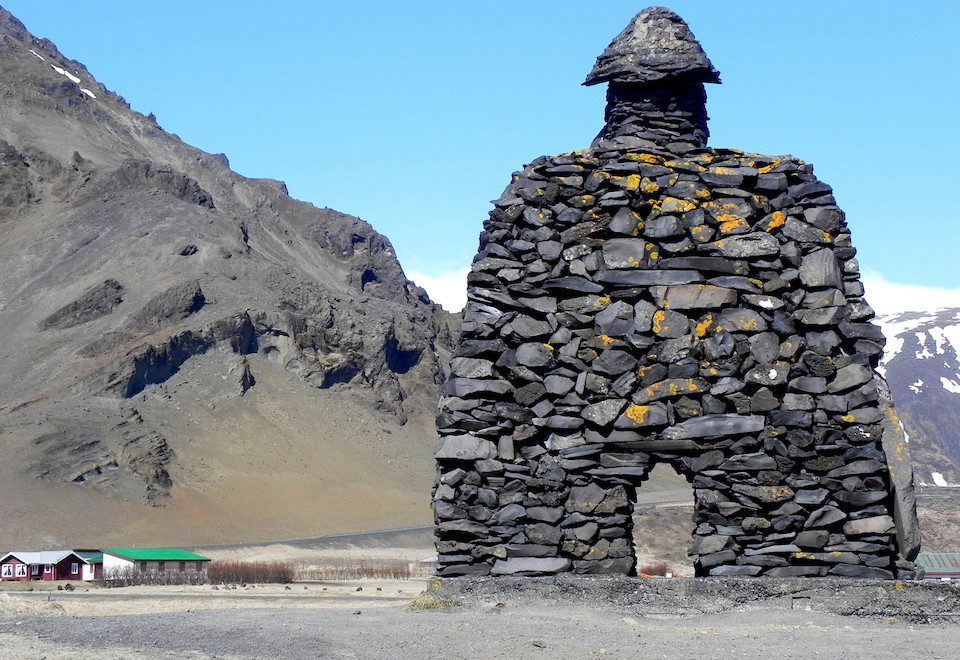


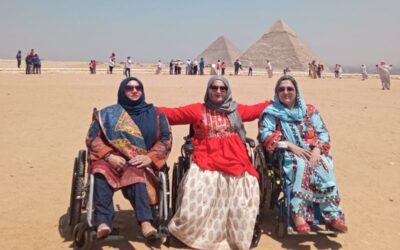
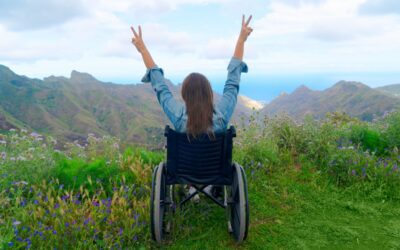

Amazing story. Makes me want to go, pain or no pain.
That was quite a motivational post. I remember suffering from ankle pain during my first international trip to Europe. The pain had become my constant companion there. However, my willpower to explore Europe on foot was stronger than the pain.
Like Karen, I, too, have arthritis, bulging discs and a pinched nerve in my back. I’m good for 2 to 3 hours then I must lay down, on ice.
I planned my trip to Iceland for June 2020, my 60th birthday. Well, we all know how that year turned out. So I planned for fall 2021 but acquired a pinched nerve in June. Now I would like to go to Iceland spring 2022. This trip was to be my first out-of-the-country travel so I’m looking for any advise about traveling and Iceland.
Way to endure, Karen!!
I walked the Camino over the Pyrenees with a # at the base of my tibia.
I had a fall a week before leaving on the trip I had been planning for years and just treated the injury as a sprain (being a retired nurse I thought I knew it all) however it soon became evident once I set off on my journey it was more than that.
After each day walking my foot and lower leg were twice the size they should have been and I would spend the rest of the day sitting with the leg elevated and an ice pack and overloaded with painkillers. Needless to say I did not see much of the tiny towns and villages where we stayed. Upon arriving home 6 weeks later had the leg looked at by a professional (not a retired nurse) and was given the news I had walked hundreds of kms with a #.
Would love to go back and do it all again as I really cannot say I enjoyed the walk with the pain and full of painkillers
Like Karen, I, too, have arthritis, bulging discs and a pinched nerve in my back. I’m good for 2 to 3 hours then I must lay down, on ice.
I planned my trip to Iceland for June 2020, my 60th birthday. Well, we all know how that year turned out. So I planned for fall 2021 but acquired a pinched nerve in June. Now I would like to go to Iceland spring 2022. This trip was to be my first out-of-the-country travel so I’m looking for any advise about traveling and Iceland.
Way to endure, Karen!!
I lived and worked in Iceland many years ago. I was young and adventurous and fit; was on my overseas experience from New Zealand. Loved Iceland. Now I have recently developed chronic bursitis, would love to return but, of course, because of this and covid, it is unlikely. Makes me feel sad unless things change somehow!
Great reminders of how to manage our expectations against our bodies limitations. Thanks for sharing